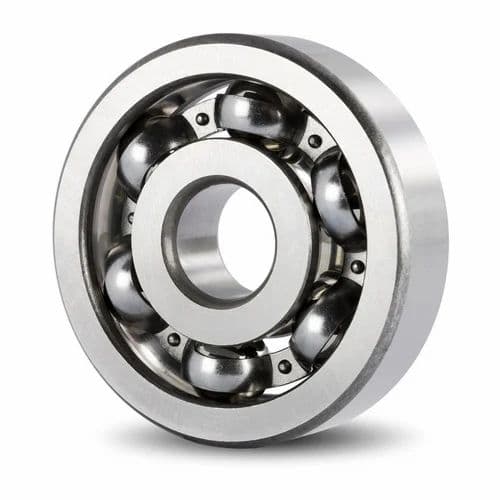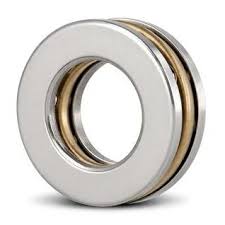Bearing Friction: Causes, Effects, and Solutions
Bearing friction is the force that opposes motion between two surfaces in contact in a bearing. In machinery, bearings are used to support rotating components and to minimize friction between parts. Abnormal bearing friction results in energy loss, heat generation, wear and tear, and reduced efficiency of machinery, which can result in higher maintenance costs and reduced overall performance. Therefore, reducing bearing friction is crucial to achieving optimal performance and longevity of machinery.
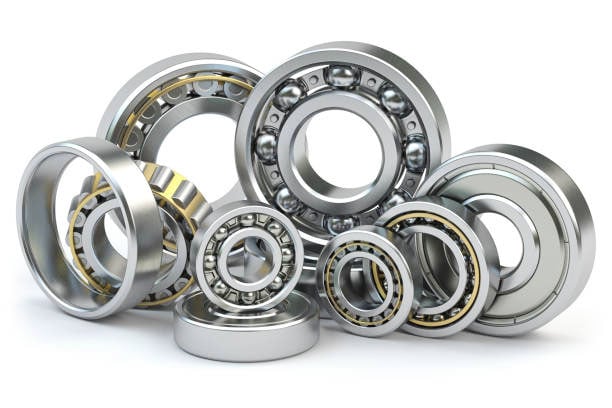
Bearing Friction Varies by Types
It is essential to acknowledge that the friction coefficients vary among different types of bearings. Understanding these variations is crucial for effectively addressing and reducing bearing friction. About the frictional torque, You can estimate bearing frictional torque using this straightforward formula:
0.5 x 0.0015 x radial load in Newtons* x bearing bore (mm)
0.5 x 0.0013 x axial load in Newtons* x bearing bore (mm)
This calculation is applicable under specific conditions: when the bearing has a standard fill of low torque lubrication, is free of contact seals, and operates at low speed and low load.
Inner Causes of Bearing Friction
Issues during the manufacturing process of a bearing can significantly affect bearing friction:
- Machining inaccuracies: such as imperfections in a bearing's roundness disrupt bearing load distribution and increase surface contact, raising friction.
- Roughness: A rougher bearing surface increases friction due to higher contact resistance and potential for material transfer.
- Inadequate Heat Treatment: Improperly controlled heat treatment can lead to increased deformation and friction.
- Material: Different materials have varying degrees of hardness and elasticity, which can affect how much the bearing deforms under load and thus influence the friction.
- Incorrect Assembly: Assembly mistakes can cause misalignment or uneven load distribution, increasing bearing friction.
Outer Causes of Bearings Friction
Here are the main causes of bearing friction during bearing operation.
- Misalignment: When bearings are not aligned properly, it can cause excessive force on certain parts, leading to increased friction and wear.
- Speed: At high rotational speeds, friction in bearings can increase due to increased heat and potential for lubricant breakdown. About the relationship between the frictional moment and speed, please see the curve below.
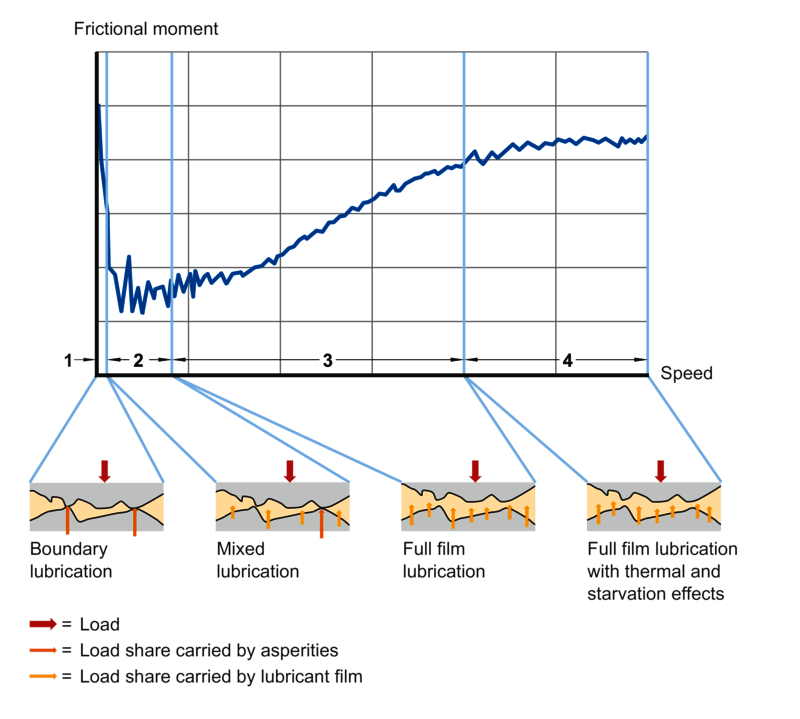
About this, SKF makes use of M = M rr + M sl + M seal + M drag to calculate the total bearing friction moment. The figure below shows the meaning of Mrr, Msl, Mseal, Mdrag.
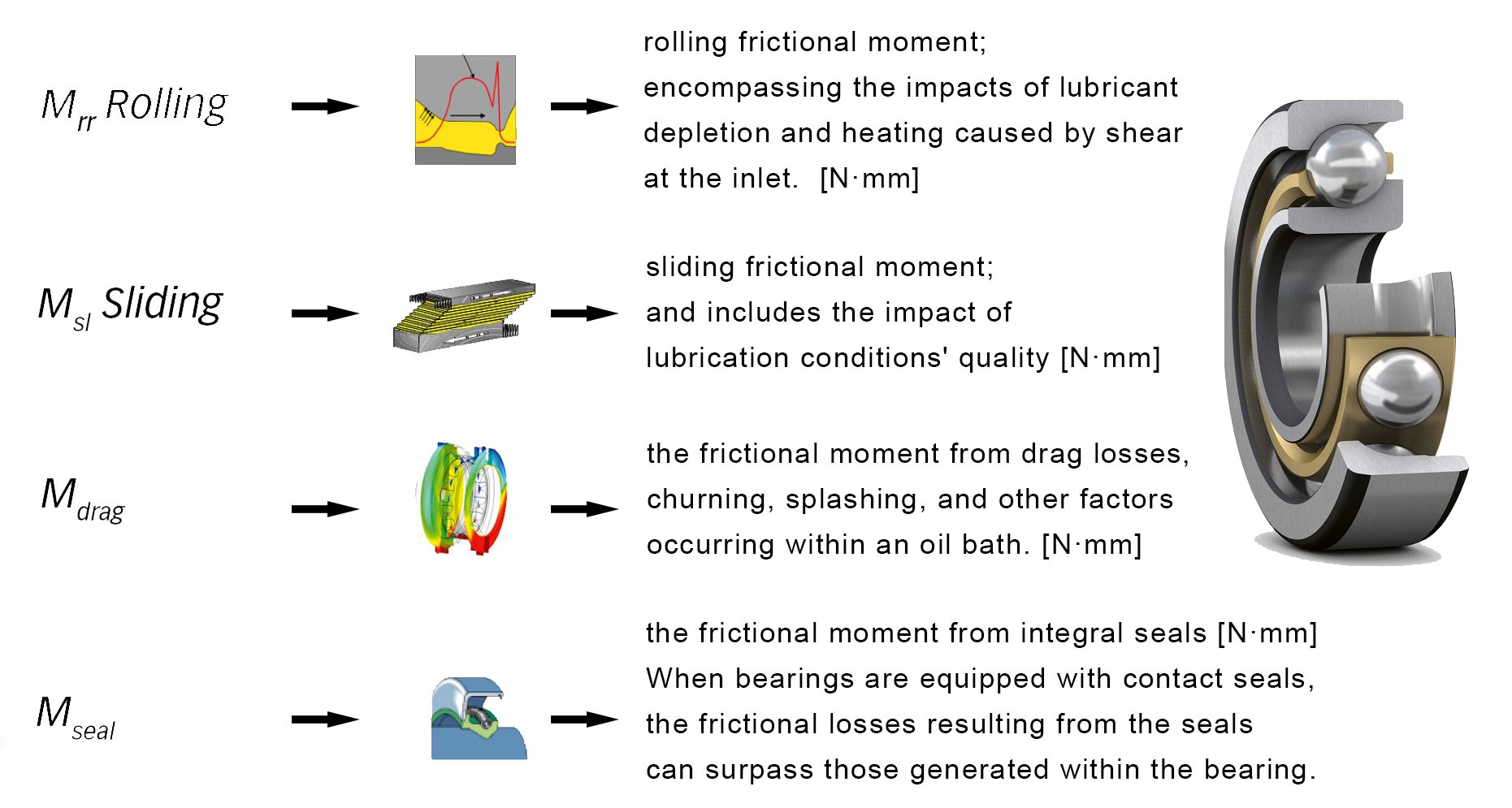
- Lubrication issues: If bearings are not properly lubricated, it can cause the surfaces to grind against each other, leading to friction and damage.
- Wear and tear: Over time, bearings can wear down, resulting in rough surfaces that cause friction and increase wear and tear on the machinery.
- Overloading: When bearings are subjected to loads beyond their capacity, it can cause excessive friction and wear.
- Temperature: Higher operating temperatures can lead to increased internal clearances in the bearing, causing more contact and thus higher friction.
- Contamination: Dirt, dust, and other debris can get into bearings, causing damage to the surfaces and increasing friction.
Effects of Abnormal Bearing Friction
- Reduced efficiency and performance
- Increased energy consumption
- Premature bearing failure
- Costly repairs and downtime
Solutions to Reduce Bearing Friction
Perfect Machining Processes
To reduce internal bearing friction, it's key to perfect machining processes, enhance surface finishing, control heat treatment accurately, use suitable materials, and ensure proper assembly. These improvements in manufacturing and assembly help mitigate friction-causing factors and extend bearing life.
Proper lubrication and maintenance
Proper bearing lubrication is crucial for reducing bearing friction. Lubricants create a thin film between the bearing surfaces, reducing bearing friction and wear. However, it's important to use the right type and amount of lubricant, as too much or too little can lead to problems. Regular maintenance, such as checking and changing lubricants, can help prevent issues before they become major problems.
Regular cleaning and inspection
Regular cleaning and inspection can help prevent contamination and detect any issues before they lead to major problems. Bearings can accumulate dirt, dust, and debris over time, which can cause damage and increased bearing friction. By regularly cleaning and inspecting bearings, you can identify any issues early on and prevent further damage.
Choosing the right bearing design and material
Different bearing designs and materials can offer different levels of friction and wear resistance. Choosing the right design and material for your specific application can help reduce bearing friction and increase the lifespan of the bearings. For example, ceramic bearings are more durable and have less friction compared to traditional steel bearings. It's important to consider the operating conditions and load requirements when selecting bearings.
Addressing misalignment and overloading issues
Misalignment and overloading can cause excessive force on certain parts of the machinery, leading to increased bearing friction and wear. By addressing these issues, such as by realigning parts or reducing loads, you can reduce the amount of force and friction placed on the bearings, leading to improved performance and reduced wear.
Upgrading to advanced bearing technologies
Upgrading to advanced bearing technologies, such as ceramic bearings or self-lubricating bearings, can offer reduced bearing friction and increased durability compared to traditional bearings. These technologies may be more expensive initially, but they can provide cost savings in the long run by reducing maintenance and replacement costs.
In conclusion, bearing friction, originating from manufacturing imperfections and operational factors, significantly affects machinery efficiency and lifespan. It can lead to reduced performance, increased energy consumption, and premature failures, necessitating costly repairs. Thus, we advocate for continuous improvements and innovations to reduce bearing friction, enhancing machinery efficiency and contributing to sustainable, cost-effective manufacturing.
As a typical example of low-friction applications, flow meter bearings exemplify how proper bearing design and execution can lead to optimal machinery performance and longevity. They serve as ideal models for manufacturers to learn and incorporate good practices into their design and production processes.
Keep Learning



